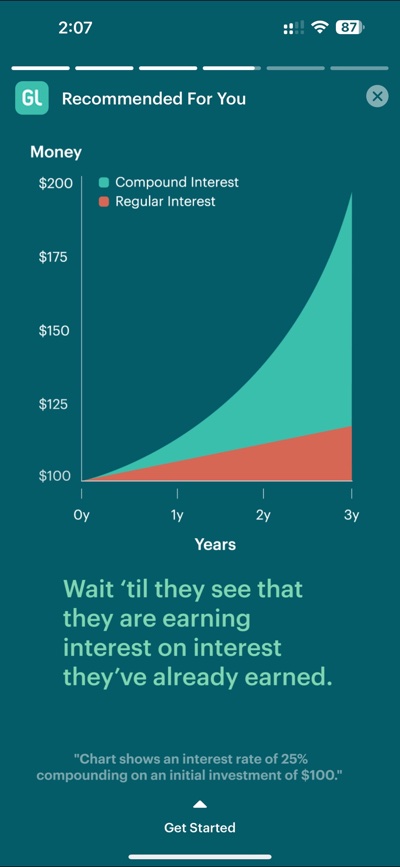Greenlight is a popular reloadable debit card service for kids, where parents can manage and track their kids spending. I have look into it and you can also add an allowance, payments for recurring chores or one-time jobs, and teach them compound interest via “parent-paid interest”. I suppose it's wise to show the kids how to handle digital spending before the credit card offers arrive.
I have also found that Fidelity has teenage account that is very friendly for both the parents and the kids. It has a debit card and teen-owned account with no fees and no minimum balance.
Both offer interest on cash balance: 4.97% for Fidelity and 5% for Greenlight.
Fidelity offers away for kids to learn how to invest in stocks and mutuals funds; whereas Greenlight only offers to invest in stocks.
Fidelity allows parents to periodically transfer money to the kids accounts although not very easy to setup whereas Greenlight has direct deposit possible but also Chores payment, which is quite cool for the kids.
Something that is unique to the Fidelity account is the option to trade unused gift cads balance for cash.
I can see some educational benefits of the Greenlight Debit Card, because parents can introduce their children to financial literacy in a fun and interactive way. By offering a hands-on approach to managing money, kids can learn valuable lessons about budgeting, saving, and even investing.
Both Fidelity and Greenlight have standout features with the ability to set up automated allowance payments and spending limits, providing a practical way to teach kids about responsible money management.
App cost
Greenlight however does not come for free but you need to buy a plan for monthly fee. 😒😒😒
Is the inclusion of an educational app with engaging games and lessons further enhances the learning experience worth the cost?
Teaching compound interest with higher interest rates.
It can be hard to visualize compound interest at low interest rates, so parents can increase it by paying a higher “interest” rate out of their own pockets. For example, here is an illustration of $100 earning a 25% interest rate (paid by the parent) as opposed to a 5% interest rate. It makes the idea of earning interest on interest more immediate and tangible. Ideally, this can teach them that delayed gratification turns it into future rewards. You can set interest rates from 1% up to 100%.

For families looking to kickstart their children's financial education journey, the Greenlight Debit Card and Fidelity Youth offer both a comprehensive solution that combines practical money management tools with engaging learning experiences.
With a focus on financial literacy and responsible spending, this innovative approach empowers kids to take control of their financial futures.









Comments
Post a Comment